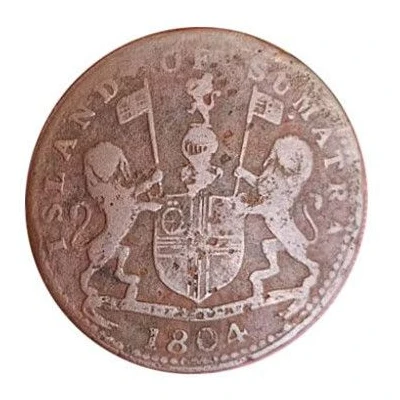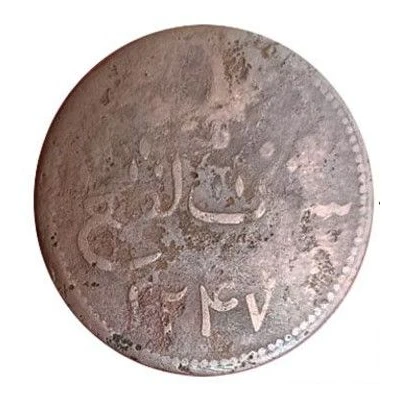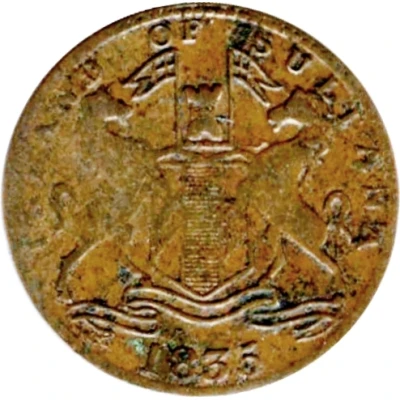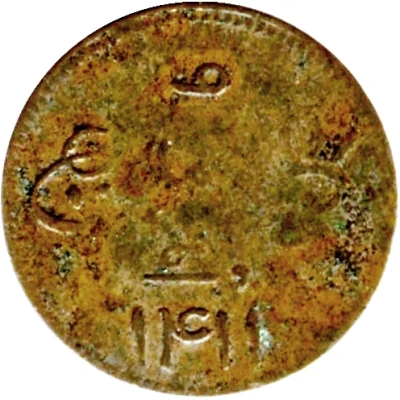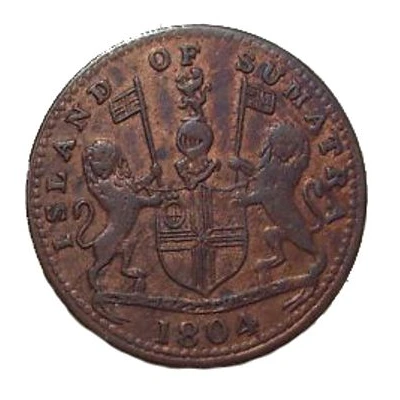
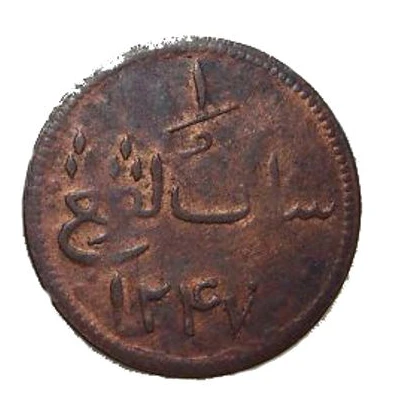

1 Keping Sumatra
1247 (1832) year| Copper | 3.476 g | 27 mm |
| Issuer | Sumatra (British East Indies) |
|---|---|
| Type | Token |
| Year | 1247 (1832) |
| Calendar | Islamic (Hijri) |
| Value | 1 Keping (1⁄400) |
| Currency | Dollar (1783-1824) |
| Composition | Copper |
| Weight | 3.476 g |
| Diameter | 27 mm |
| Thickness | 1 mm |
| Shape | Round |
| Orientation | Medal alignment ↑↑ |
| Demonetized | Yes |
| Updated | 2024-10-04 |
| Numista | N#21188 |
|---|---|
| Rarity index | 82% |
Reverse
Arabic inscription with denomination at top and date at bottom using eastern Arabic numeral. Beads around border.
Script: Arabic
Lettering:
۱
سات کڤڠ
۱۲۴۷
Unabridged legend:
1
Satu keping
1247
Translation:
One keping
AH 1247
Edge
Plain
Comment
These coins were not official currency of any state. They were first issued in the early 1800s by British merchants at Singapore, to alleviate base coin shortage, before spreading to various parts of the Malay Archipelago. To circumvent confiscation attempts by colonial authorities (particularly the Dutch), British merchants use inscriptions that refer to locations that are vague, fictitious, or unaffiliated to Europeans. In this manner, legally it could not be argued that the tokens were intended for circulation in colonial territories.This coin is heavier and larger than the one listed in Singh (1986).
See Singh (1986:445-449) for details.
Interesting fact
The A Token 1 Keping (Sumatra) 1247 (1832) coin from Sumatra (British East Indies) made of Copper weighing 3.476 g is interesting because it is a rare example of a local currency used in the British East Indies during the 19th century. The coin was issued during the reign of Sultan Muhammad Shah, who ruled Sumatra from 1832 to 1842. The coin's design features a unique blend of Islamic and European influences, reflecting the cultural exchange that occurred during the colonial era. Additionally, the coin's copper composition and relatively low weight make it a notable example of early currency production in the region.
